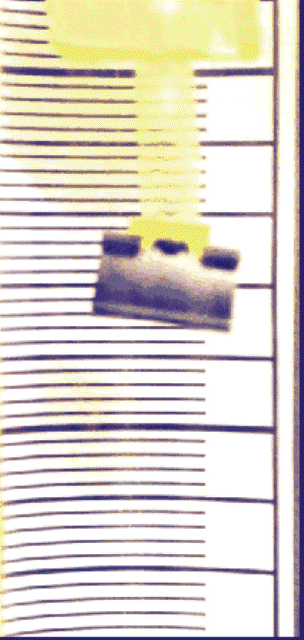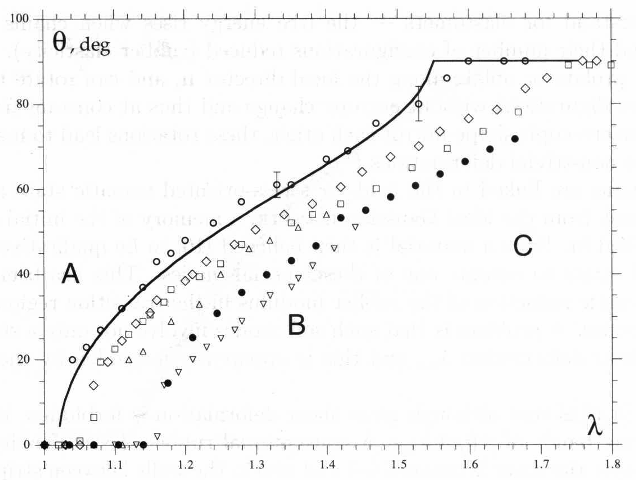|
|
|
Research
 |
| Nematic elastomer in glass tube. Length changed by hot or cold air (Eugene Terentjev). |
| -------------------------------------------------------
|
 |
| Director rotation in nematic elastomer in response to a perpendicular extension Finkelmann et al). |
| -------------------------------------------------------
|
 |
| Rubber laser - colour changes greatly with stretch (Peter Palffy-Muhoray). |
Liquid Crystal Elastomers are rubbery networks composed of long, crosslinked polymer chains that are also liquid crystalline (LC) - nematic, cholesteric or smectic.
Their unique phenomena arise because the natural shape of such chains follow the LC order. They typically elongate in the presence of nematic (orientational) order, and reversibly contract when the order is lost (typically by heating, but also by illumination or absorption of solvent). The molecular shape change is mirrored in the mechanical shape changes of the solid that the chains constitute. The changes can be very large, up to 500%. [click to see the film of the rubber shown on the right lifting a weight]
Nematic order can also be re-directed rather than changed in magnitude. Redirection in nematic liquids is by electric fields (the basis of displays) or by boundary conditions. In solids this can be by electric, mechanical and optical fields. The naturally long dimension of the chain shape distribution (not individual chains) can also change. If mechanically not too constrained, and for nearly ideal networks, the macroscopic shape change can be at low energy - so called "soft elasticity". This phenomena has been seen by many groups using mechanical, optical and electrical fields. The effect dominates most responses of LC elastomers since it is a low energy route (if necessary by the formation of textures - "quasi-convexification"). It is a large amplitude phenomenon; in fact there is a small threshold to director response, but it then extends over huge strains. It is therefore frequently misunderstood by those using linear continuum theory (small strain elasticity) or doing small strain rheology. Director rotation proceeds and concludes in a singular manner during the low energy deformation. It is through 90 degrees ultimately and cannot be treated in any linear way. A straightforward extension of classical rubber elasticity to LC rubber predicted or models these and other phenomena. The basic physics is briefly described in the first chapter of our book.
Many other phenomena arise. For instance director rotation and mechanical contractions cause a cholesteric stop band to shift in an elastomer. The colour change from the red towards the blue is shown here for an elastomer that also lases, with large changes in emission line colour. Equally striking is the reversible loss of order due to light absorption, and hence a corresponding, reversible mechanical response. This response can be large and very fast, and of possible application in actuation.
The Liquid Crystal Elastomers web site provides links, resources (films, results, new phenomena, . . .), meeting notices etc, as well as on-line material from our book.
|

